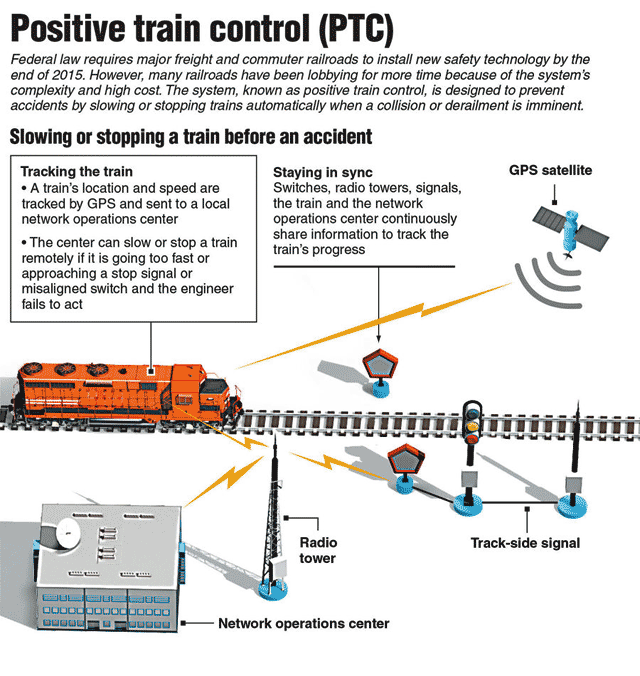

North America - Installation of the system that tracks train location, speed, and direction is to be done by the end of the year.
A looming deadline that requires all U.S. railway operators to install automatic train safety control systems by 31 Dec 2015 is not realistic and should be
extended, says Canadian Pacific Railway.
CP chief executive officer Keith Creel told a 16 Sep 2015 investors conference that Washington's decision to impose the deadline for implementating Positive
Train Control (PTC) systems will lead to industry-wide railway disruptions.
If the deadline is not extended, CP will likely be required to stop handling passenger trains in the United States as well as trains that carry certain types
of toxic chemicals, known as TIH trains.
CP operates on 22,000 kilometres of track in Canada and the United States.
"I can tell you that we're looking at an environment where if it's not extended, we just can't get it done. The technology isn't there, " Creel
said.
U.S. Congress mandated the installation of PTC systems in 2008.
PTC systems use global positioning and track side transponders to monitor the location, speed, and direction of trains.
Implementation is intended to reduce the likelihood of fatal train collisions and derailments.
Creel said railways have invested billions of dollars into developing and installing necessary equipment.
"We've been running flat out since this became an objective for us," he said.
"We've made some significant progress but because of the technology that's involved, we haven't been able to implement and test, and make sure that what
we're doing is actually going to improve safety."
Other railways have also signaled their intention to suspend TIH traffic and terminate commuter operations in some locations before 1 Jan 2016 if the deadline
isn't extended to avoid federal fines potentially worth millions of dollars a day.
"Stopping passenger and TIH traffic, which is the traffic that necessitates PTC installation, is the most responsible option," Union Pacific Railway
said earlier this year.
"With 10,000 customers across nearly every industry relying on Union Pacific to deliver products, this embargo will have wide reverberations across the
country."
Creel said the North American railway industry needs two or three more years to develop and test the PTC system and five or more to install the systems on all
affected lines.
"If the regulatory body does what's practical, and what needs to be done, they will extend the deadline," he said.
Luc Jobin, executive vice-president at Canadian National Railway, said his company is making progress toward full implementation, but he said an extension will
be required and "should be granted soon, we hope."
"We estimate that we have about $500 million or so more to invest in order to achieve the full plan for PTC," he said.
"So we're making good progress."
Alex Paterson, public affairs co-ordinator with the Railway Association of Canada, said PTC technology represents "an extraordinary technical and
operational challenge for the U.S. rail industry."
Implementation in the U.S. has been affected by significant delays in the development of several key technologies and components, as well as in the permitting
processes for radio towers, he said.
"U.S. legislators are actively discussing an extension of the implementation deadline," he said in an email.
"However, if the U.S. Congress is not able to enact a workable extension, the threat of significant disruptions to freight and passenger traffic is very
real, with potential network delays affecting the interchange of traffic among rail carriers throughout North America."
The association said Ottawa should not impose deadlines for PTC implementation in Canada until the system has been deployed and assessed in the
U.S.
Brian Cross.


